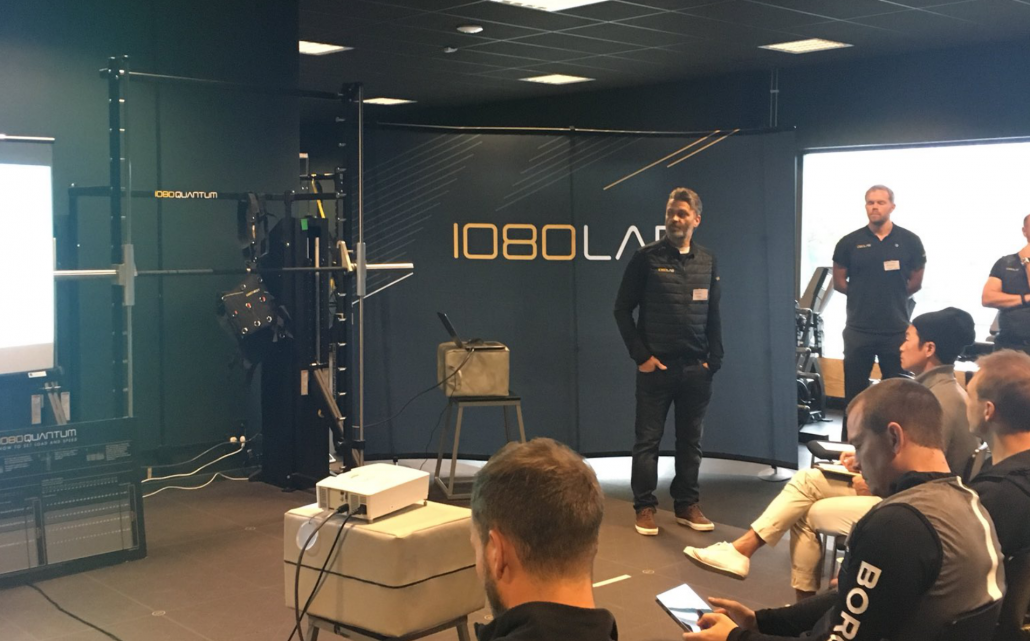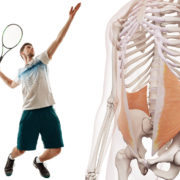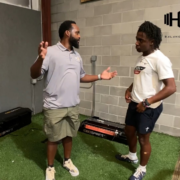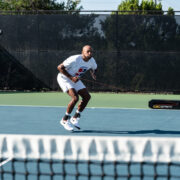Ola Eriksrud and Vern Gambetta covered as much ground as they could in 45 minutes on a recent GAINcast interview. Highlights included Eriksrud’s perspectives on hamstring injuries, movement efficiency and the meaningless use of the word “core.”
Ola Eriksrud is a professor of biomechanics and 1080 Motion’s director of research and development. Far from being a cloistered academic, Eriksrud works closely with athletes to understand and improve their coordination and movement efficiency. This “skin in the game” was a recurring theme in his GAINcast chat with Vern Gambetta.
Here are a few key points from their interview….
Hamstring injuries and the pitfalls of isolated exercises
Vern Gambetta: Hamstring and groin injuries keep increasing, and we spend an inordinate amount of time doing isolated exercises to address these issues. But if Nordic hamstring curls and other exercises worked we’d see a decrease, but we see an increase at the highest level.
Ola Eriksrud: I think it becomes a very simplistic view to look at a very complex problem that extends beyond an ability to generate force at low speeds in artificial conditions. Yes, you can say it’s a training load and you facilitate strength gains in that particular structure. But then if you look at what the hamstring truly does and how it functions in that, you will see that this is obviously a two-joint muscle. That is one thing missing that approach. And if you do any closed-chain task of jumping you see two-joint muscles being responsible for transferring force and energy to the more distal segment.
It’s a coordinative thing, so more force is actually not efficient. Slow expression of force becomes non-functional.
Movement efficiency: Separating force from velocity
Eriksrud: We know that in a throwing action if you are incapable of utilizing your legs that will put greater load on the more distal structure and the rest of the shoulder. For example, if I’m unable to use a leg drive in a tennis serve there is a greater velocity demand placed on the shoulder. So if I have a better leg drive I can have less contribution from the shoulder. That places less shearing and compressive forces, so I might be less likely to sustain an injury.
We have preliminary data on golfers that is very interesting, and some high-level tennis players. A colleague of mine, Ali [Ghelem], who was testing himself along with a player he was working with. They compared how much force they could generate, and Ali was able to generate more force. Obviously the player got p***ed off because it’s a competitive mindset.
But then they looked at the most important variable: speed. Then, the player was superior by far. He was more effective at getting speed onto the implement. He was able to use less force with a more optimal result. If you think of muscles creating all these compressive forces through the body and you think of this from an efficiency standpoint, it’s like driving with the hand-brake on vs. off. Then you get into the motor control strategies of how efficient people are able to turn on and off. They’re not always on.
Does anyone actually know where the core is?
Ola Eriksrud: I actually collect definitions of stability because they go in every which direction. The next thing is, what is “core?” Because if you look at the definitions of what constitutes “the core,” that is also a very interesting test to see what people consider the muscles making up the core.
Vern Gambetta: What isn’t a “core?”
Eriksrud: Exactly, there isn’t anything! If you look, for instance, at what Escamilla published when he defined it he included the hamstrings and lats in the core. The only segments, then, not in the core are the forearm, the hand and the foot! Then you have some explaining to do.
Be sure to check out more from Ola Eriksrud on ResearchGate, and subscribe to the GAINcast so you’ll be among the first to know when Vern Gambetta has him back for that round-table on “core training!”
More on the blog about Ola Eriksrud:
1080 MAP research: Validating the hand reach star excursion balance test






































































